Location: Floydada, TX
Challenge
- Limited water availability and hot, dry conditions limit cotton productivity.
Trial Goal
- Yield increase and cotton fiber quality increase
Trial Results
The following results were observed in the UpTerra-treated field, relative to the control.
- 62.68% yield increase
- Positive moisture trends
- Consistently higher NDVI values
- Lower quality metrics
- 2¢ lower loan rate*
Trial Setup
- A split-field design was used to compare UpTerra-treated cotton and untreated cotton for agronomic performance.
- TerraFlow® devices were installed directly in the irrigation system to enhance water use across the treated side of the field. The units use a patented process that organizes and enhances irrigation water via simultaneous vortexing and frequency transmission, aimed at improving soil infiltration and plant hydration.
- TerraNet® frequency transmitters were deployed to deliver targeted signals designed to support soil and plant health. These frequencies, transmitted via the irrigation system, were intended to stimulate biological processes such as nutrient uptake, microbial activity and plant resilience throughout the growing season.
- Fertilizer rates, planting dates, irrigation schedules and harvest dates remained consistent between control and treatment fields.
- The treated field was planted at a slightly higher seeding rate of 2,600 more seed/acre than the control. Higher seeding rates can increase competition for moisture, nutrients and sunlight, potentially putting the treated plants at a slight disadvantage. However, they could also increase the yield per acre.
- Soil moisture sensors were installed at various depths to monitor moisture availability in both the control and treated sides of the field. Seasonal moisture data were analyzed to evaluate plant and soil responses to different water conditions, including a comparison of the percentage of available moisture at each depth.
- Each side of the field was harvested separately, with gin and machine data used to compare cotton yield.
- Statistical analyses were conducted on all applicable data, including a paired T-test and Least Significant Difference analysis.
Yield Results
Based on the collected data, the UpTerra treatment yielded 62.68% more pounds per acre of harvested cotton than the control field.
| Pounds per Acre | Percent Difference | |
| UpTerra Treatment | 1591 | +62.68% |
| Control | 978 |
Quality Metrics
- The treated sample showed a notable decline in grade, higher trash and leaf content and darker fiber appearance, which may reduce market value.
- Minimal changes in staple length and uniformity suggest fiber structure remains stable.
| Gin Quality Metrics | |||
| Treated | Control | Percent Difference | |
| Grade | 23.88 | 17.15 | ↑ 39.24% |
| Leaf | 3.86 | 2.14 | ↑ 80.37% |
| Staple | 36.26 | 36.21 | ↑ 0.14% |
| Micronaire | 4.58 | 4.64 | ↓-1.29% |
| Strength | 31.16 | 31.49 | ↓ -1.05% |
| Reflectance | 77.28 | 79.02 | ↓ -2.20% |
| Yellowness | 9.46 | 9.5 | ↓ -0.42% |
| Trash | 5.48 | 1.99 | ↑ 175.38% |
| Uniformity | 81.77 | 80.59 | ↑ 1.46% |
| Length | 112.96 | 112.56 | ↑ 0.36% |
Loan Rate (Based on Gin Quality)
The treated received a loan rate of $0.5388/lb, just over two cents lower than the control. This reflects that the control cotton had a slightly higher value than the treated cotton due to the quality metrics listed above.
| Income per Pound | Difference | |
| UpTerra Treatment | .5388 | -.0255 |
| Control | .5643 |
Soil Moisture
UpTerra-treated soil retained 9% more moisture at 10” and 24.7% more at 22”, ensuring better hydration during peak growth.
- The control field experienced sharper fluctuations and higher evaporative losses, leading to inconsistent moisture availability.
- Deeper soil layers in both fields remained stable, but UpTerra-treated soil showed more efficient moisture use, aligning with plant water demand.
The UpTerra treatment improved water efficiency, reduced stress and ensured sustained crop hydration. At the same time, the control field exhibited faster moisture depletion and greater reliance on irrigation, highlighting the benefits of organized water for soil moisture management.
Biomass Accumulation
Satellite imagery captured during the 2024 growing season shows the biomass accumulation in the field during seasonal crop development. The NDVI values of 53 satellite images captured of each field are graphed below. The graph represents the averages of the season’s NDVI values.
The treated field maintained higher NDVI values than the control throughout the entire season, indicating higher amounts of biomass accumulation.

Key Trial Takeaways
- The trial results indicate that the UpTerra treatment has a positive impact on cotton yield and soil moisture distribution.
- Better moisture availability in the soil helped reduce plant stress during drought conditions and could reduce cotton irrigation costs.
- While the treated cotton produced significantly higher yields, quality reductions impacted market value, suggesting that refining fiber management and ginning practices could help optimize both yield and loan rate benefits.
- This trial suggests that UpTerra technologies can help cotton growers achieve higher yields and better water management, improving overall profitability potential.
| Agronomic benefit | Economic benefit | Operational benefit |
| Improved yield | Higher revenue per acre | Reduced production cost/lb of cotton |
| Improved soil moisture efficiency | Less water required/lower costs | Resource conservation and environmental risk mitigation |
Related Content
Mastering Cotton Irrigation: A Complete Guide
Why Your Crops May Be Struggling: It Might Not Be What You Think


